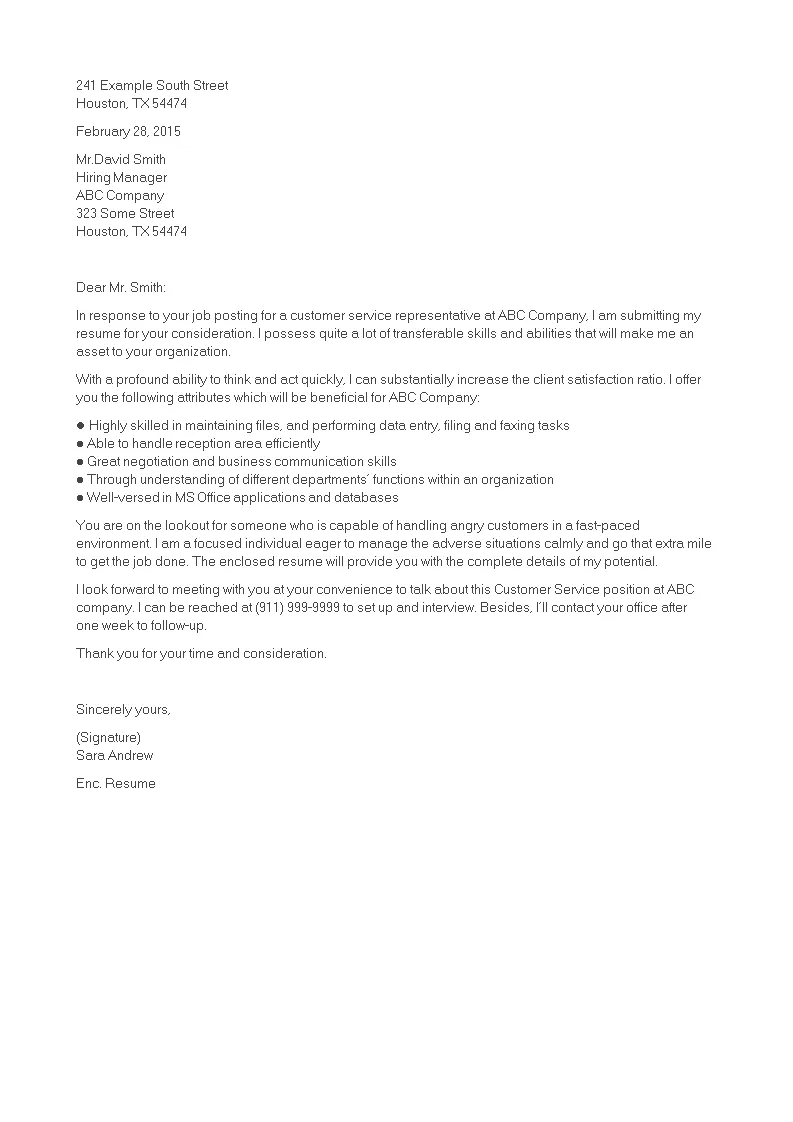Crafting the Perfect Customer Service Cover Letter
A well-crafted cover letter is your first opportunity to make a positive impression on a potential employer. For customer service roles, where communication and interpersonal skills are paramount, a compelling cover letter can significantly increase your chances of landing an interview. This guide will walk you through every step of creating a standout cover letter, ensuring you highlight your strengths and capture the hiring manager’s attention. From structure and format to key skills and common pitfalls, we will explore everything you need to know to make your application shine. Let’s begin by understanding why a cover letter is so important in the first place.
Understanding the Importance of a Cover Letter
Why a Cover Letter Matters
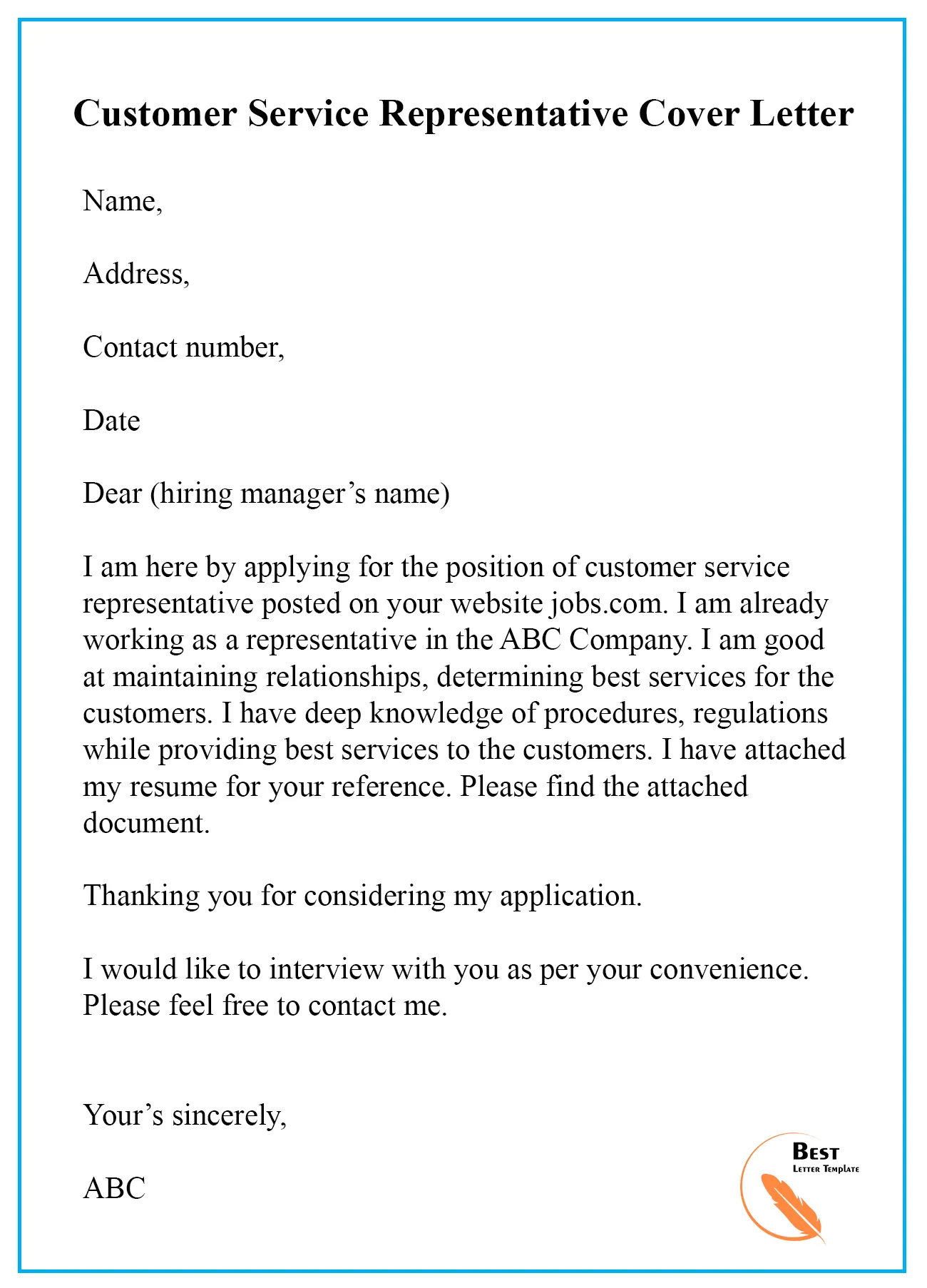
While your resume provides a concise overview of your qualifications, a cover letter allows you to elaborate on your experiences and connect them directly to the job requirements. It’s your chance to show your personality, enthusiasm, and writing skills. In a customer service context, a cover letter demonstrates your ability to communicate effectively and persuasively – essential qualities for the role. It allows you to explain gaps in your employment history, address any concerns, and showcase how your skills align with the company’s values and the specific needs of the position. It’s not just a formality; it’s a crucial part of the application process.
Highlighting Your Skills
A well-written cover letter allows you to highlight the skills and experiences that are most relevant to the customer service position. This is not a summary of your resume; instead, it is an opportunity to go into detail, providing specific examples of your accomplishments. Use this space to showcase how your skills and experiences have prepared you for this particular role. For instance, if the job description emphasizes problem-solving, provide a specific example of how you successfully resolved a customer issue in a previous role. Always tailor your letter to the job posting, using keywords from the description to demonstrate that you understand the role and the employer’s expectations. This demonstrates you read the job description and prepared the cover letter with precision.
Cover Letter Structure and Format
A clear and professional format is essential to ensure your cover letter is easy to read and makes a strong first impression. The structure should follow a standard business letter format, making it organized and easy to follow. This includes a proper header, an engaging opening, well-structured body paragraphs, and a professional closing. Adhering to a conventional format helps to establish credibility, as it shows you understand and can adhere to professional communication standards. Attention to detail in formatting also indicates that you are organized and care about presenting yourself well.
Header Information
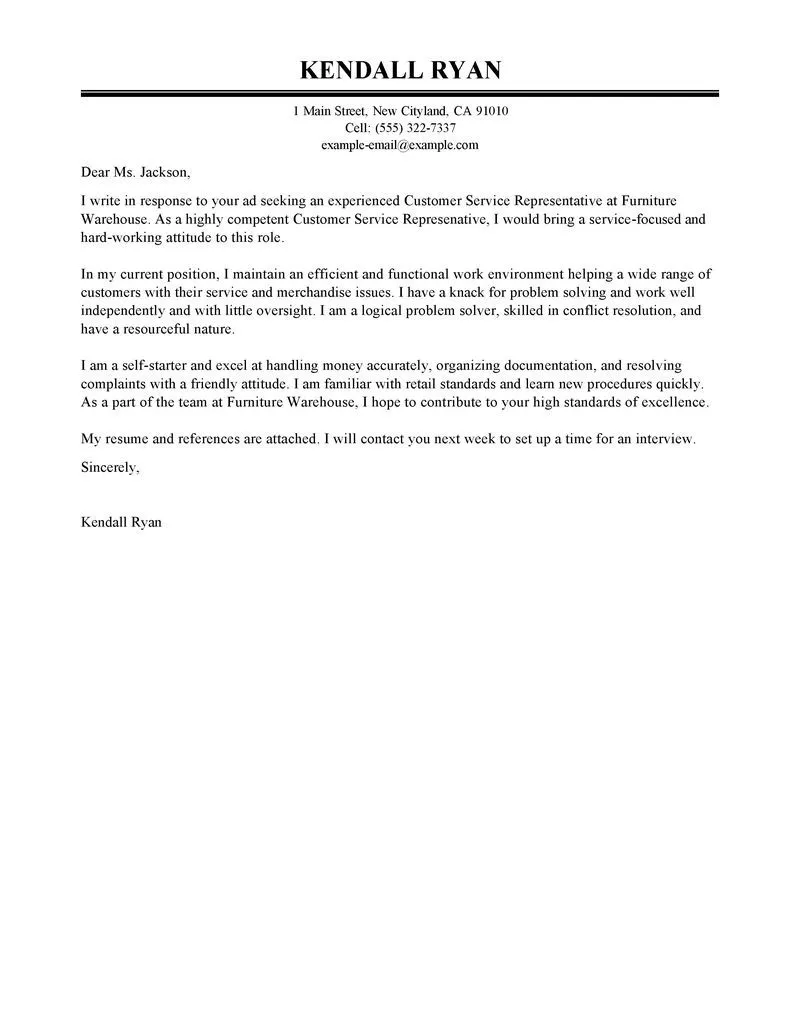
Your header should include your contact information (name, phone number, email address, and optionally, your LinkedIn profile URL). The date should follow, and then the hiring manager’s name and the company’s address, if known. If you don’t know the hiring manager’s name, use a generic salutation like ‘Dear Hiring Manager’. Accuracy is critical here – ensure all details are correct and up-to-date. This section immediately provides the necessary information for the employer to contact you and also shows you are professional and organized. Review this section to avoid errors before sending.
Opening Paragraph
The opening paragraph should grab the reader’s attention immediately. State the position you are applying for and how you learned about it (e.g., from a job board, company website, or referral). Briefly mention why you are interested in the role and the company. Avoid generic statements and instead express genuine enthusiasm for the opportunity. This is your chance to create an immediate positive impression, showing that you are genuinely interested in the position and excited to contribute to the team. Keep it concise and engaging to encourage the reader to continue.
Body Paragraphs
The body of your cover letter is where you showcase your relevant skills and experience. Use 2-3 paragraphs to provide specific examples that demonstrate your abilities. Connect your experiences to the job requirements, highlighting how your skills align with the company’s needs. Use the STAR method (Situation, Task, Action, Result) to structure your examples, making them clear, concise, and impactful. Quantify your achievements whenever possible (e.g., ‘Improved customer satisfaction scores by 15%’). Be sure that each paragraph serves a clear purpose and is focused on the value you bring to the role. This is the meat of your cover letter, so make sure that it’s easy to read.
Closing Paragraph
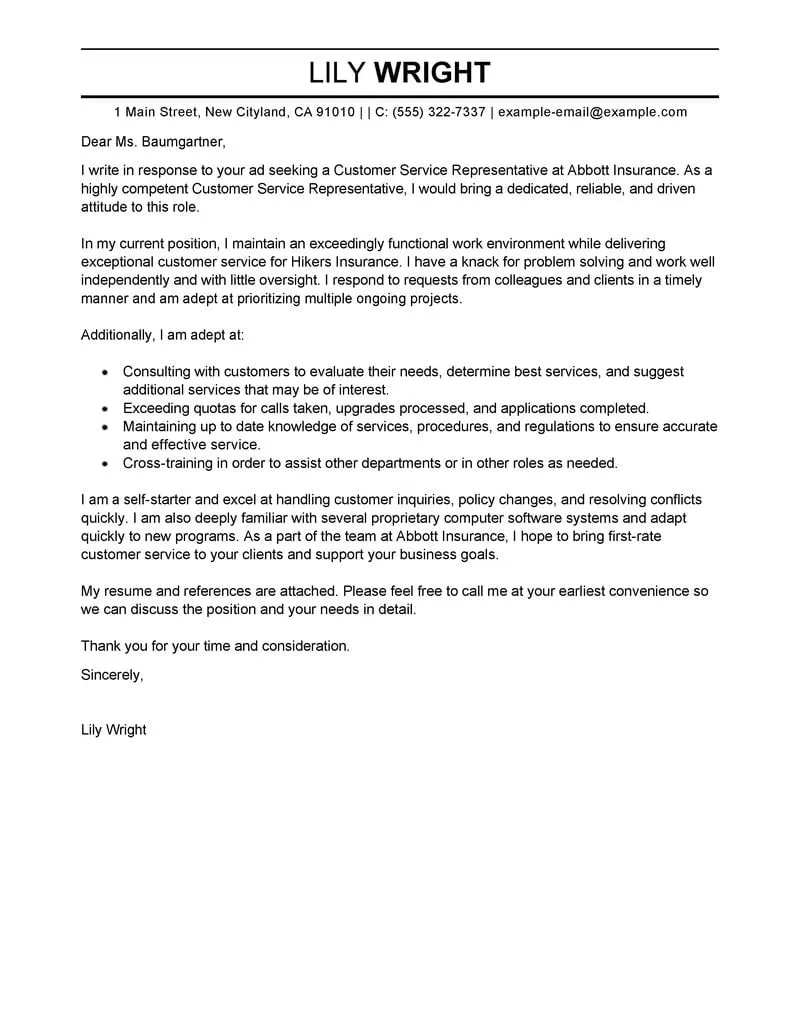
In the closing paragraph, reiterate your interest in the position and the company. Thank the hiring manager for their time and consideration. Include a call to action, such as expressing your eagerness to discuss your qualifications further and stating that you look forward to hearing from them. Maintain a professional tone throughout and ensure you proofread the paragraph carefully. End the letter with a formal closing such as ‘Sincerely’ or ‘Best regards,’ followed by your name. This closing paragraph leaves a lasting impression.
Key Skills to Showcase
Customer service roles demand a specific set of skills. Highlight those that are most relevant and show how you have used them in previous roles. By highlighting these essential skills in your cover letter, you demonstrate your suitability for the position and increase your chances of securing an interview. Remember to provide specific examples to support your claims and show how you’ve used these skills to achieve positive outcomes.
Communication Skills
Excellent communication is crucial in customer service. Showcase your ability to communicate clearly, concisely, and empathetically, both verbally and in writing. Highlight your active listening skills and your ability to adapt your communication style to different customers. Provide examples of how you have resolved complex issues through effective communication. Also, mention experience in de-escalation, conflict resolution, and ability to convey information in a way that is understandable to the customer. Show how you can communicate in different settings, like phone calls or email.
Problem-Solving Abilities
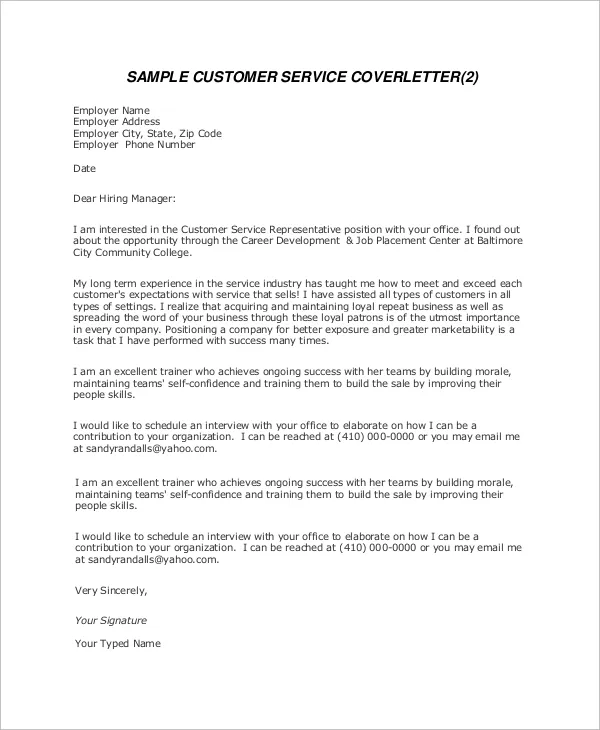
Customer service often involves resolving problems efficiently. Demonstrate your problem-solving skills by providing specific examples of how you have identified, analyzed, and resolved customer issues. Mention your ability to think critically, make informed decisions, and find creative solutions. Highlight your experience with troubleshooting, identifying root causes, and implementing effective solutions. Be sure to quantify the results when you can, for example, reducing the average resolution time or improving customer satisfaction. Remember to showcase the process and outcome of your problem-solving efforts.
Empathy and Patience
Empathy and patience are vital in customer service. Show how you can understand and respond to customer needs and emotions with compassion. Provide examples of how you have handled difficult customers and turned negative experiences into positive ones. Highlight your ability to remain calm and composed under pressure and your commitment to providing excellent customer service, even in challenging situations. Explain the techniques you use to actively listen and show empathy. These qualities help in building customer loyalty and delivering a positive experience.
Highlighting Relevant Experience
Your experience is a key component of your cover letter. When highlighting relevant experience, it is important to tailor your information to the specific job description. Showcase the skills and experiences that align with the employer’s needs. This approach demonstrates that you understand the role and are genuinely interested in the opportunity. Use quantifiable achievements, concrete examples, and tailored content to showcase your qualifications.
Tailoring to the Job Description
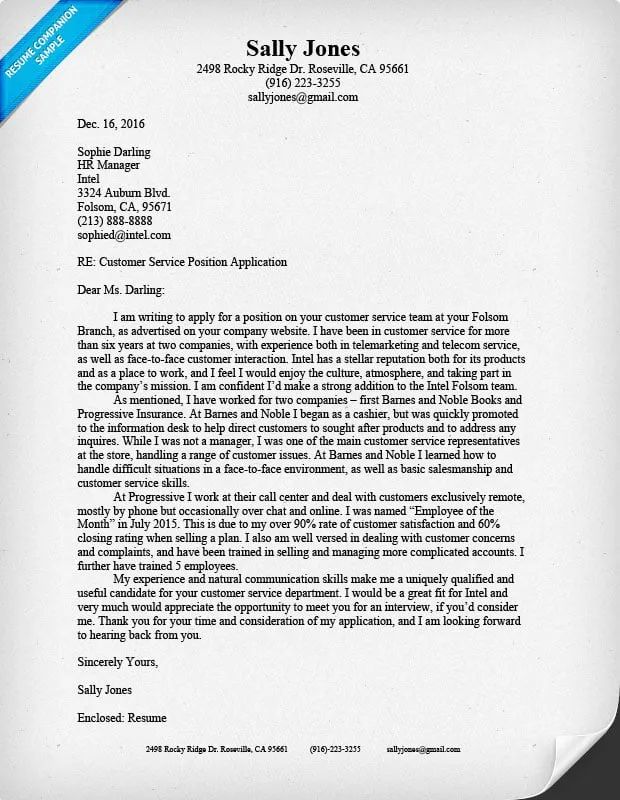
Carefully review the job description and identify the key requirements and keywords. Use these keywords throughout your cover letter to demonstrate that you meet the specific needs of the role. Tailor your examples and skills to match the job description, showing that you understand what the employer is looking for. Address each requirement and show how your past experiences meet those needs. Customize your letter for each application; do not use a generic template.
Quantifying Achievements
Whenever possible, quantify your achievements to demonstrate your impact. Use numbers, percentages, and specific examples to illustrate your success in previous roles. For example, state how you increased customer satisfaction scores by a certain percentage, reduced resolution times by a certain amount, or improved sales figures. Providing measurable results makes your accomplishments more credible and shows the value you bring to an organization. Ensure that your achievements are relevant to the job description.
Formatting and Proofreading
Formatting and proofreading are vital in creating a professional cover letter. A well-formatted and error-free letter shows that you pay attention to detail and care about making a good impression. It is important to ensure your cover letter is easy to read, well-organized, and free from errors. Poor formatting and errors can detract from the content of your cover letter. Formatting, layout, and proofreading will make your cover letter better.
Font and Layout
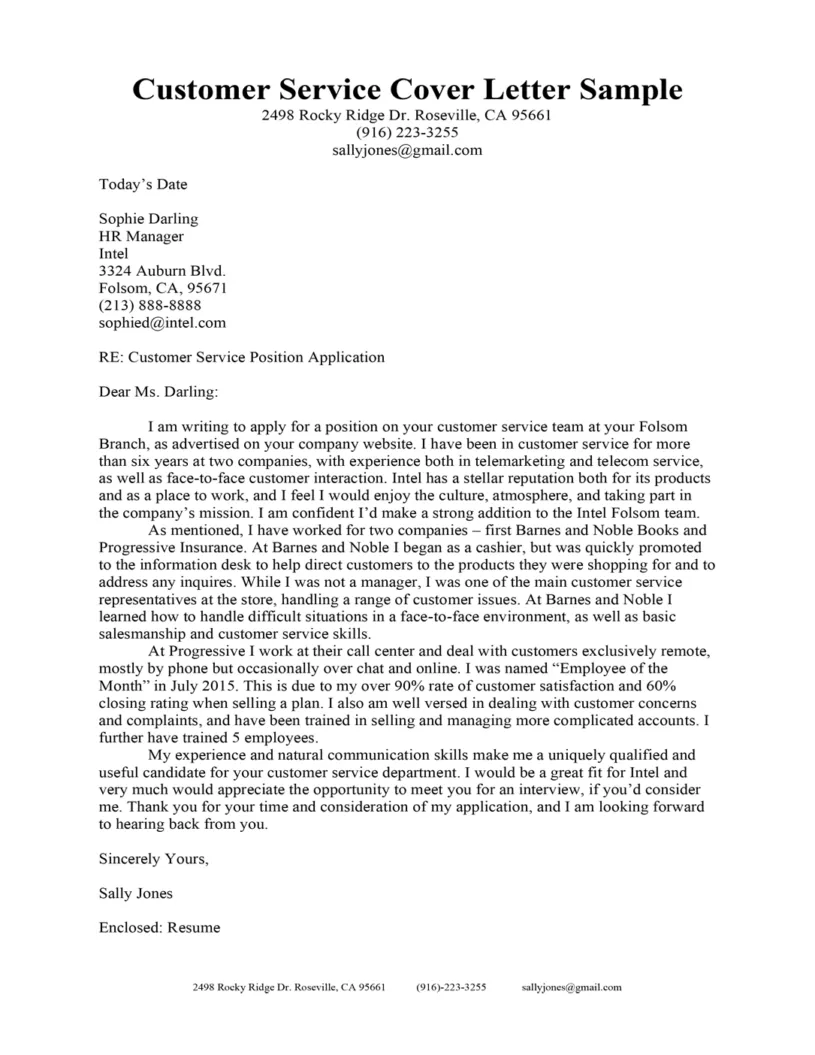
Choose a professional and easy-to-read font, such as Times New Roman, Arial, or Calibri. Use a font size between 10 and 12 points. Maintain consistent formatting throughout the letter, including margins, line spacing, and paragraph alignment. Ensure that the layout is clean and well-organized, with clear headings and bullet points if needed. The layout should be visually appealing and easy to scan. A well-formatted letter makes it easier for the hiring manager to read and understand your qualifications.
Proofreading Tips
Carefully proofread your cover letter multiple times to check for any grammatical errors, typos, or inconsistencies. Use a spell-checker and grammar checker to identify potential mistakes. Read your cover letter aloud to catch errors that you might miss when reading silently. Ask a friend or colleague to review your letter for a second opinion. Proofreading is essential. A well-proofread letter demonstrates attention to detail. Errors make a negative impression and can cost you the opportunity. Review the cover letter multiple times and consider a third-party review.
Common Mistakes to Avoid
Several common mistakes can diminish the impact of your cover letter. Avoid these pitfalls to ensure that your application makes a positive impression. Take care to prevent these errors and use them as a checklist. Avoid mistakes that could cause problems.
Generic Letters
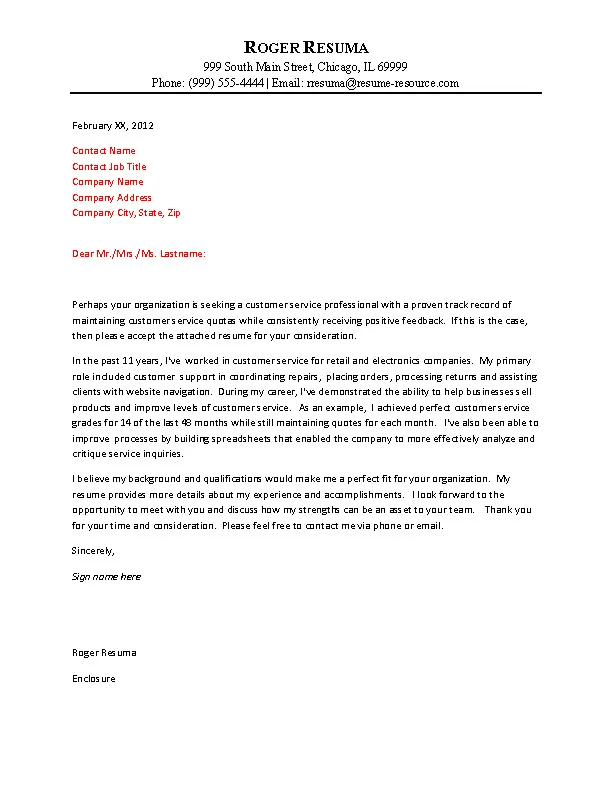
Avoid sending generic cover letters that are not tailored to the specific job or company. Use the job description and company information to customize your letter, demonstrating that you are genuinely interested in the opportunity and understand the role. The use of a generic cover letter shows that you do not care enough to put the time and effort into each application. A tailored cover letter will help your chances to get the job. Generic letters demonstrate a lack of interest.
Typos and Grammatical Errors
Typos and grammatical errors can damage your credibility and make you appear unprofessional. Proofread your cover letter carefully to catch any mistakes. Make use of spell-checkers and grammar checkers, and also consider having another person review your letter for errors. Errors can be distracting to the reader and give the impression that you are not detail-oriented. Proofread every letter to be sure of zero errors. Always check for errors before sending.
Sending Your Cover Letter
Once you’ve crafted your cover letter, ensure it is sent in the appropriate format. This will give you the best chance of being considered for an interview. Always confirm the file format and follow up appropriately. Sending your cover letter demonstrates a high level of professionalism.
File Format
Unless otherwise specified in the job posting, save your cover letter as a PDF file. A PDF file preserves the formatting of your letter, ensuring that it appears as intended on any device. If the job posting requests a specific file type, adhere to their instructions. Confirm the format before submission.
Follow-Up
If you have not heard back from the employer within a reasonable timeframe (usually one to two weeks), consider sending a polite follow-up email. Reiterate your interest in the position and inquire about the status of your application. Keep the email concise and professional. Do not follow up too frequently, as this may appear impatient.
In conclusion, a well-crafted cover letter is crucial for securing a customer service position. By following these guidelines, you can create a cover letter that highlights your skills, demonstrates your value, and captures the attention of hiring managers. Remember to tailor your letter to each job, proofread carefully, and present yourself professionally. Good luck with your job search!
